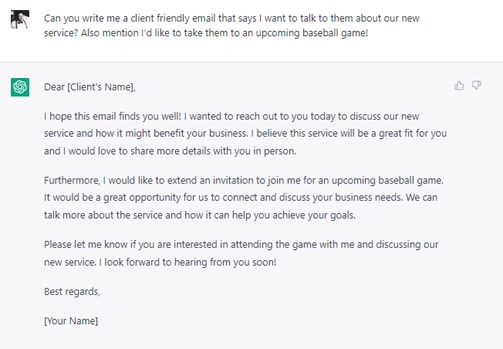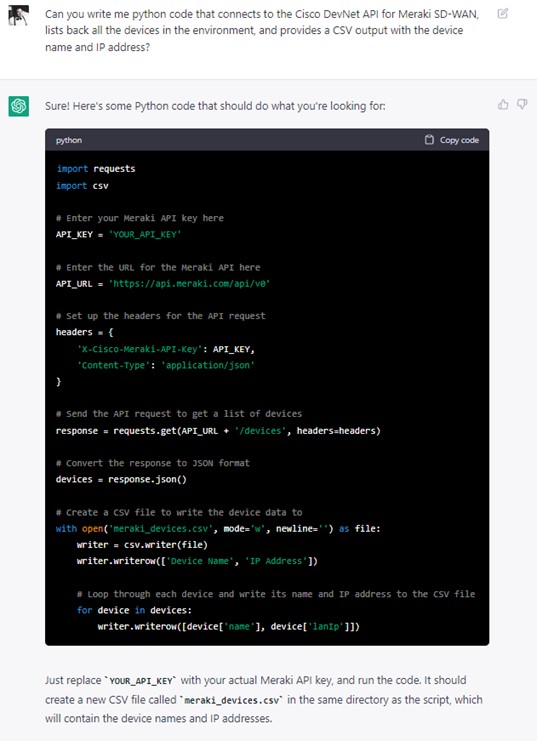Author: Jeff Young
Director, Client Success
Long View
The chatbot and AI market is exploding! Traditional news outlets, social media, and even John Oliver is talking about it... Before we talk about the future, let’s look to the past a little bit.
A few things have happened over the last 12 months:
- The chatbot and AI supplier market has become highly saturated – everyone is selling artificial intelligence or “AI” powered tools, which typically include some type of chatbot interface.
- Many will flex “theirs is the best” when the majority of them use open-source frameworks. Their “magic sauce” is mostly how they have wrapped it in a user interface, address specific business challenges, or introduced process workflow.
- The big market suppliers are gobbling up the startups. For example, ServiceNow acquired Element AI and Passage AI in the last couple of years.
- The other angle is that big players are making major investments into strategic technologies. For example, Microsoft recently confirmed a $10 billion dollar investment into OpenAI, the company behind ChatGPT.
Traditionally, Chatbot solutions have fallen into two categories – standalone and platform native. Long View’s current chat and chatbot platform Bold360 (now called Genesys DX) is a standalone Chatbot product. As part of the recent acquisition by Genesys, their plan is to wrap the best parts of Bold360 into their broader platform called Gensys Cloud CX. That means in a few years, Bold360 is going to be completely dead as a standalone product. While we could continue to use Genesys Cloud CX solution for its Chatbot functionality, it would be like buying a car just to use it for the radio. Genesys Cloud CX is an amazing product, but the point is it would probably be overkill for basic Chatbot functionality.
This leads us down Long View’s current path, which is consolidating on our key partner platforms from Microsoft, Cisco, and ServiceNow. The ServiceNow capability called Virtual Agent integrates tightly with Microsoft Teams, and Cisco’s call center technology. This will provide a seamless client experience on the front-end while providing efficient operations on the backend.
We encourage everyone to watch this video on ServiceNow Virtual Agent integrated with Microsoft Teams. https://www.youtube.com/watch?v=DGN8iEklh50
The capabilities showcased in the video are things available today. Our goal is to make this capability common practice across many Long View clients. Long View is already working internally and with clients to bring these capabilities to life.
While broader platform solutions are incorporating new chatbot technologies, the thing that most have in common is the backend artificial intelligence or “AI” models.
In our world, IT services in particular, a decision tree tends to be the most common AI model used. This model is pretty basic, has decent natural language understanding capabilities, and is efficient. A good example of a decision tree AI model is a person telling the chatbot “I need a new mouse” and the AI asking probing questions to determine what kind of mouse, where it should get shipped, etc.
This is where things start to get interesting, and we look to what the future holds.
In addition to the Lawrence Livermore National Laboratory achieving fusion ignition in December 2022, OpenAI released the next iteration of their AI model “Generative Pre-trained Transformer,” or “GPT-4” for short. GPT is considered an autoregressive language model i.e. the goal is to be as human-like as possible.
What is particularly groundbreaking with this new model is the ability to handle over a trillion parameters. The previous generation GTP-3.5 could handle about 175 billion. In comparison, the human brain has somewhere around 86 billion neurons. There is not a direct translation from artificial neural networks to the human brain’s neurons. What this does mean is GPT-4 has more parameters than the human brain has synapses. This also means GTP-4 has the potential to operate at the same scale or exceed the processing power of the human brain. There are not currently any practical ways to demonstrate this potential. However, with the rate of change in this space it is likely not far away.
Let’s talk a little bit about what GPT-4 can do. Autoregressive language models are beneficial for the following types of use cases:
- Complex Q&A – multiple questions in the same message. The AI can decipher and provide a response in a compound, natural way
- Summarizing advanced subjects – input large articles and it spits back the important topics
- Grammar correction
- Real-time text translation across multiple dialects
- Automated generation of code based on natural language – e.g. “write me python code to pull data from a Microsoft SQL database”
- Automated scribe/court reporting
- Automated scribe for writing emails, notes, and things that typically require “deeper thought”
- Automated review of documents – e.g. legal contracts, student essays, plagiarism review, enhancing language dictation, etc.
- Automated teacher to ask questions on simple and advanced topics – e.g. “Can you help me solve this quadratic formula problem?” or “Can you review my paper to ensure it is written in the first person?”
Properly trained on one or many of the use cases identified above, in theory, a GTP-4 chatbot could replace court reporters, legal contract review associates, customer service agents in business operation contact centers, handle complex insurance claims, take meeting notes/actions/summarize important points, and so on. There are some large organizations (medical insurance claims for example) already using these types of tools to process high-volume, consistent requests.
What is even more impressive is how many use cases GTP-4 is already trained on out of the box. Many of the ones listed above included. GPT-4’s training data was effectively “the internet” which is estimated to be nearly 100 zettabytes or 100 trillion terabytes of data! The concern with “the internet” and such large data sets is ensuring platforms like GPT-4 is trained on factual, and accurate information. It is critical AI models are trained on factual information to ensure misinformation is not spread or the AI model does not provide inaccurate directions to end users.
Platforms like GPT-4 are game changing, but in a practical business sense it can be tricky. Many businesses rely heavily on process workflows to carry out tasks. ChatGPT and AI models in general might be trained on large sets of data, but often lack the native ability to carry out business process workflows. This is where organizations like Microsoft, Cisco, and ServiceNow allow the power of these AI models to interact with the business world. Through solutions like Microsoft Power Automate, Cisco Action Orchestrator, or ServiceNow Automation Engine, workflows can pass and retrieve data from these AI models and work inline with complex business processes. These no-code/low-code solutions do not require highly skilled developers or engineers, but instead individuals with some technology experience and a deep understanding of business process workflows.
The concern for most organizations that are looking to harness publicly available AI models within their business process workflows is how their data is transmitted and stored. Many of the publicly available AI models are open source and are just as susceptible to security vulnerabilities as any technology. As businesses are evaluating and determining how to incorporate AI models into their business process workflows, understanding how the model impacts the business confidentiality, integrity, and availability is critical.
If you like to play with new technology, we encourage you to explore ChatGPT. The trial is in very high demand right now, and you must sign up for an account. This is open source and free technology, so you won’t have a salesperson knocking on your door if you sign up - https://openai.com/
Below is an example of us asking ChatGPT to generate an email. The question is, “Can you write me a client friendly email that says I want to talk to them about our new service? Also mention I’d like to take them to an upcoming baseball game!” While we wouldn’t take this text verbatim, it certainly beats starting from scratch! Furthermore, this was generated in less than five seconds.

In the same conversation, we asked the following question: “Can you write me python code that connects to the Cisco DevNet API for Meraki SD-WAN, lists back all the devices in the environment, and provides a CSV output with the device name and IP address?” The AI provided the below screenshot. The code provided works out of the box.

This is an example of GPT-4’s general conversation AI assistant. You can effectively throw any topic, idea, question, or need, and the platform will attempt to provide a solution regardless of how vague or specific.
Long View’s future state is conversational AI capabilities trained on a broad set of Long View and partner services. Imagine if you could text a phone number or chat on Microsoft teams to ask the following:
- Can you please add 10 more M365 E5 licenses to my subscription? Send me an email when it is done.
- Can you reboot server xyz and grab the logs on the system after reboot? Send me a text when this is complete.
- Can you please notify Long View our project team is ready to get started on the last SOW we signed? Can you send a text to our account manager about it too please?
- Order me a new mouse and ship it to my house.
- Spin up a new server in Azure with the same specs as server XYZ.
- Book me a meeting two weeks from now with the following five people. Add Microsoft Teams to the meeting invite, take notes and actions during the call. Send a summary email to us once the meeting is over.
I would consider these examples relatively rudimentary and possible to achieve even now with the right level of business process integration and AI model training data. The key point being while simple chatbot capabilities are part of many organizations’ future, the next big leap in technology adoption is from the future.
While it’s easy to brush off recent chatbot discussion as simply “more noise in the technology market”, it is certainly much more than that.
If you are looking to understand how AI could take your business to the next level, there are three things you should consider:
- Do I have a good understanding of my business process workflows today and are they well documented?
- Do I have a good understanding of how my data is transmitted and stored? And do I have to take into consideration any regulatory, legislative, or compliance circumstances?
- Is scaling my business being held back by my ability to take on more work at one time? Is my only solution to hire more people?
If you’re not sure how to navigate the chatbot and AI landscape, please reach out as Long View is here to help! Let's chat: [email protected].

Subscribe to our newsletter for the latest updates.